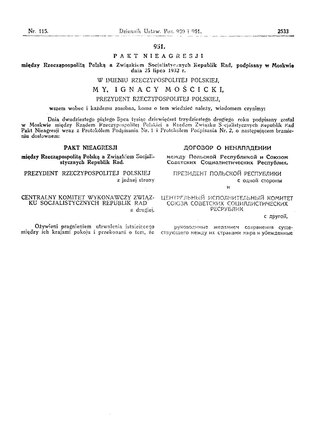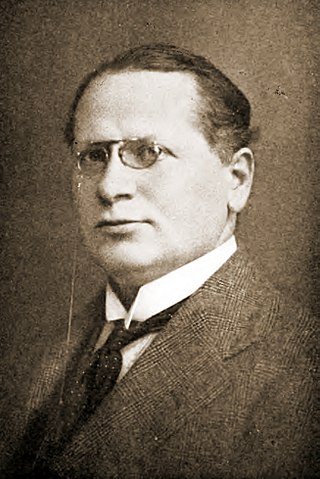Related Research Articles

The Kellogg–Briand Pact or Pact of Paris – officially the General Treaty for Renunciation of War as an Instrument of National Policy – is a 1928 international agreement on peace in which signatory states promised not to use war to resolve "disputes or conflicts of whatever nature or of whatever origin they may be, which may arise among them". The pact was signed by Germany, France, and the United States on 27 August 1928, and by most other states soon after. Sponsored by France and the U.S., the Pact is named after its authors, United States Secretary of State Frank B. Kellogg and French foreign minister Aristide Briand. The pact was concluded outside the League of Nations and remains in effect.

The Stimson Doctrine is the policy of nonrecognition of states created as a result of a war of aggression. The policy was implemented by the United States government, enunciated in a note of January 7, 1932, to the Empire of Japan and the Republic of China, of non-recognition of international territorial changes imposed by force. The doctrine was an application of the principle of ex injuria jus non oritur. Since the entry into force of the UN Charter, international law scholars have argued that states are under a legal obligation not to recognize annexations as legitimate, but this view is controversial and not supported by consistent state practice.

Disarmament is the act of reducing, limiting, or abolishing weapons. Disarmament generally refers to a country's military or specific type of weaponry. Disarmament is often taken to mean total elimination of weapons of mass destruction, such as nuclear arms. General and Complete Disarmament was defined by the United Nations General Assembly as the elimination of all WMD, coupled with the “balanced reduction of armed forces and conventional armaments, based on the principle of undiminished security of the parties with a view to promoting or enhancing stability at a lower military level, taking into account the need of all States to protect their security.”
The Treaty on the Protection of Artistic and Scientific Institutions and Historic Monuments or Roerich Pact is an inter-American treaty. The most important idea of the Roerich Pact is the legal recognition that the defense of cultural objects is more important than the use or destruction of that culture for military purposes, and the protection of culture always has precedence over any military necessity.

Frank Billings Kellogg was an American lawyer, politician, and statesman who served in the U.S. Senate and as U.S. Secretary of State. He co-authored the Kellogg–Briand Pact, for which he was awarded the Nobel Peace Prize in 1929.

The Locarno Treaties were seven agreements negotiated in Locarno, Switzerland, from 5 to 16 October 1925 and formally signed in London on 1 December, in which the First World War Western European Allied powers and the new states of Central and Eastern Europe sought to secure the post-war territorial settlement, in return for normalizing relations with the defeated German Reich. It also stated that Germany would never go to war with the other countries. Locarno divided borders in Europe into two categories: western, which were guaranteed by the Locarno Treaties, and eastern borders of Germany with Poland, which were open for revision.

The Little Entente was an alliance formed in 1920 and 1921 by Czechoslovakia, Romania and the Kingdom of Serbs, Croats and Slovenes with the purpose of common defense against Hungarian revisionism and the prospect of a Habsburg restoration in Austria or Hungary. France supported the alliance by signing treaties with each member country. The rapid growth of German power caused its collapse in 1938, and it never went into wartime operation.
A non-aggression pact or neutrality pact is a treaty between two or more states/countries that includes a promise by the signatories not to engage in military action against each other. Such treaties may be described by other names, such as a treaty of friendship or non-belligerency, etc. Leeds, Ritter, Mitchell, & Long (2002) distinguish between a non-aggression pact and a neutrality pact. They posit that a non-aggression pact includes the promise not to attack the other pact signatories, whereas a neutrality pact includes a promise to avoid support of any entity that acts against the interests of any of the pact signatories. The most readily recognized example of the aforementioned entity is another country, nation-state, or sovereign organization that represents a negative consequence towards the advantages held by one or more of the signatory parties.

This timeline of events preceding World War II covers the events that affected or led to World War II.

The Four-Power Pact, also known as the Quadripartite Agreement, was an international treaty between Britain, France, Italy, and Germany that was initialled on 7 June 1933 and signed on 15 July 1933 in the Palazzo Venezia, Rome. The Pact was not ratified by the French Parliament.

The Soviet–Polish Non-Aggression Pact was a non-aggression pact signed in 1932 by representatives of Poland and the Soviet Union. The pact was unilaterally broken by the Soviet Union on September 17, 1939, during the Soviet invasion of Poland.

The Litvinov Protocol is the common name of an international peace treaty concluded in Moscow on February 9, 1929. Named after the chief Soviet diplomat moving the negotiations forward, Maxim Litvinov, the treaty provided for immediate implementation of the Kellogg-Briand Pact by its signatories, thereby formally renouncing war as a part of national foreign policy.

A treaty battleship was a battleship built in the 1920s or 1930s under the terms of one of a number of international treaties governing warship construction. Many of these ships played an active role in the Second World War, but few survived long after it.
David Hunter Miller (1875–1961) was a US lawyer and an expert on treaties who participated in the drafting of the covenant of the League of Nations.

Relevant events began regarding the Baltic states and the Soviet Union when, following Bolshevist Russia's conflict with the Baltic states—Lithuania, Latvia and Estonia—several peace treaties were signed with Russia and its successor, the Soviet Union. In the late 1920s and early 1930s, the Soviet Union and all three Baltic States further signed non-aggression treaties. The Soviet Union also confirmed that it would adhere to the Kellogg–Briand Pact with regard to its neighbors, including Estonia and Latvia, and entered into a convention defining "aggression" that included all three Baltic countries.
The General Act for the Pacific Settlement of International Disputes is a multilateral convention concluded in Geneva on September 26, 1928. It went into effect on August 16, 1929 and was registered in League of Nations Treaty Series on the same day. The treaty was ultimately ratified by 22 states. It was subsequently denounced by Spain.

Pacifism has manifested in the United States in a variety of forms, and in myriad contexts. In general, it exists in contrast to an acceptance of the necessity of war for national defense.
Salmon Oliver Levinson was a practicing attorney who specialized in industrial organizations and corporate law. He was active in the peace movement in the 1920s and was responsible for drafting the Kellogg–Briand Pact, signed in 1928. Levinson noted: "We should have, not as now, laws of war, but laws against war; just as there are no laws of murder or of poisoning, but laws against them.” The treaty was the first international agreement to make war illegal. The treaty commits the parties to "condemn recourse to war for the solution of international controversies, and renounce it, as an instrument of national policy" and agree that all disputes should be settled peacefully.

Anna Bernhardine Eckstein was a German champion of world peace, who trained as a teacher and campaigned for peace across the world. She gathered six million signatures on a petition and, in 1913, was nominated for the Nobel Peace Prize. The outbreak of the First World War interrupted her plans but her ideas influenced the Kellogg–Briand Pact of 1928.

Peace in Their Time: The Origins of the Kellogg-Briand Pact is a 1952 book by historian Robert H. Ferrell tracing the diplomatic, political and cultural events in the aftermath of World War I which led to the Kellogg–Briand Pact of 1928, an international agreement to end war as a means of settling disputes among nations. Ferrell's first book, Peace in Their Time elaborates on and extends Ferrell's 1951 Ph.D. dissertation, The United States and the Origins of the Kellogg-Briand Pact, which won Yale's John Addison Porter Prize for original scholarship. Peace In Their Time itself went on to win the American Historical Association's 1952 George Louis Beer Prize for outstanding historical writing. Ferrell would go on to become a professor at Indiana University and one of the most prominent historians in America, and wrote or edited more than 60 other books on historical topics. Historian Lawrence Kaplan praised Peace in Their Time as a harbinger of the high quality of Ferrell's subsequent career, stating that it "contained the special qualities that animated all his future work."
References
- ↑ League of Nations Treaty Series, vol. 33, pp. 26-45.